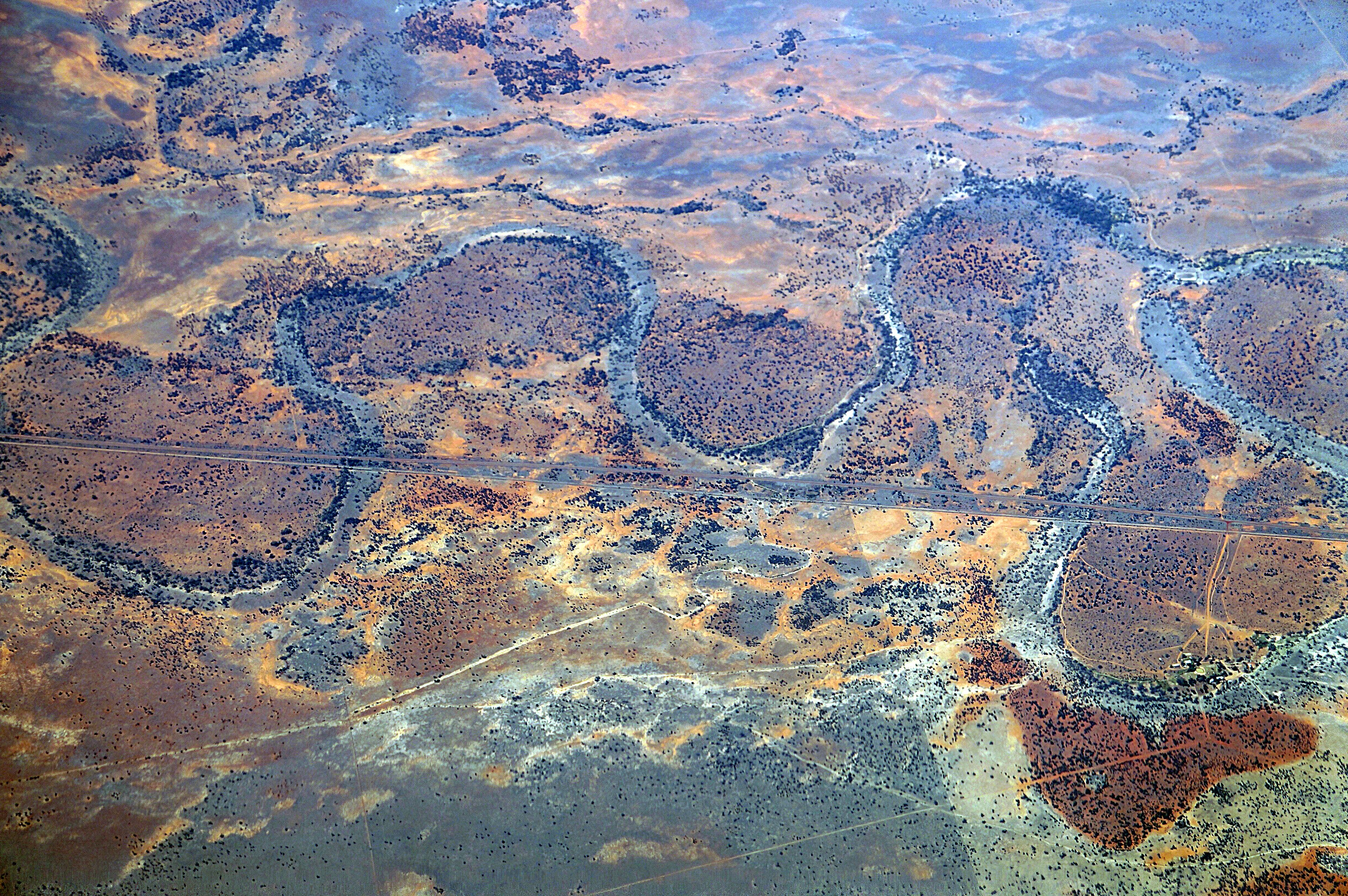Home/Curriculum resources/Reading and navigating through songlines/Activity 4 (Part three of three): Applying techniques of orality and memory to map/pathway
Learning Areas:
English, Humanities and Social Sciences, Mathematics, The Arts
Year levels:
Level 3, Level 4

Activity 4 (Part three of three): Applying techniques of orality and memory to map/pathway
This activity is a part of the Reading and navigating through songlines resource.
Murray-Darling Basin. Wagga Wagga, Wiradjuri country. Photographer: Mangiwau. Source: Getty Images. Used under licence.

Activity 4 (Part three of three): Applying techniques of orality and memory to map/pathway
Focus: This activity combines mapping skills with oral storytelling techniques. Students create memorable narrative journeys, reinforcing the connection between land, culture, and communication.
Possible overarching question: How do songlines help us understand the connection between land, culture, and communication in Aboriginal and Torres Strait Islander cultures?
Step by step guide
Step 1: Integrating maps with orality and memory techniques
Step 2: Creating oral narratives
Step 3: Practicing and sharing oral narratives and making modifications
Step 4: Presenting oral narratives
Step 5: Reflection
Step 6: Synthesis and Action
Required Resources:
Teacher Support Material
Personal maps created by students in part one of the activity
The list of orality and memory techniques created in part two (e.g., rhyme, rhythm, song, movement, humour, descriptive language)

Step 1: Integrating maps with orality and memory techniques
Have students use their personal maps created in part one and incorporate orality and memory techniques learned in part two (e.g., song, movement, rhyme, humour).
Facilitate a brainstorming session where students discuss various orality and memory techniques they can use to help someone navigate their map from start to finish. Record their ideas, referencing the memory elements created in part two.
Step 2: Creating Oral Narratives
Students create an oral narrative that guides someone from the start to the end of their personal map. Encourage students to use techniques such as:
Rhyme and Rhythm- Incorporate rhyming phrases or rhythmic patterns to make directions memorable.
Song- Create a simple song or chant that includes key landmarks and directions.
Movement- Use gestures or movements to represent different parts of the journey.
Humour- Add humorous elements to make the narrative engaging and memorable.
Descriptive Language- Use vivid descriptions to bring the landmarks and directions to life.
Step 3: Practicing and Sharing Oral Narratives
Have students pair up and practice their oral narratives, giving each other feedback on clarity and memorability, what worked and did not work.
Allow time for students to make modifications from sharing and feedback.
Step 4: Presenting Oral Narratives
Organise a session where students present or share their maps and oral narratives with the class, explaining their creative choices and the significance of the featured landmarks or elements.
If possible, organise a space where all these presentations can be shared, allowing students to experience and interact with each other's work, whether it is navigating a digital map, viewing a series of artworks, or watching a performance.
Step 5: Reflection
Lead a discussion on the experience of creating and sharing maps and oral narratives, asking students to reflect on how this process deepened their understanding of songlines and personal narratives.
Relate back to the unit's overarching questions, prompting students to articulate how this experience has informed their understanding of the relationship between land, culture, and communication.
Step 6: Synthesis and Action
Invite students to add final thoughts or insights to the anchor chart, synthesising key learnings from the lesson and the unit as a whole.
Encourage students to think about how they can preserve and pass on their maps and oral narratives, reflecting on the role of these narratives in maintaining a sense of place and history.

Related activities within this resources:

Activity 1: Modes of Communication
This activity aims to help students explore and understand various modes of communication and their purpose. Through a Gallery Walk, investigation, and reflection, students will examine different communication modes. They will identify how these modes are used to share knowledge, navigate, and help people. By unpacking maps and pathways, students will develop a foundational understanding of communication's role and how songlines function as pathways across the land.

Activity 2: Introduction to songlines
This activity builds on Activity 1, where students explored various modes of communication. Now, students will be introduced to songlines, a complex and integral part of Aboriginal and Torres Strait Islander cultures. Through engaging in exploration stations, and reflecting on their learning, students will explore the mode, purpose, and significance of songlines. This activity will help students start to understand how songlines connect land, culture, and communication.

Activity 3: Songlines as Navigational Guides
This activity aims to deepen students' understanding of how songlines function as navigational guides and routes for trade, ceremony, and social interaction, to find materials for tools, food, water, and shelter. Focusing on the natural and cultural landmarks that support navigation, students will explore various aspects of songlines through class discussions and case studies, concluding with revisiting the class anchor chart.

Activity 4 (Part one of three): Creating a Map/Pathway
This activity has three distinct parts. In this part of the activity, students are asked to connect their understanding of maps and mapping by creating their own personal map of a familiar space, noting key landmarks and features.

Activity 4 (Part two of three): Learning about techniques of orality and memory
Building on the skills and insights gained in part one, where students created personal maps and identified key landmarks, this activity introduces the integration of orality and memory techniques. Students will explore how stories, histories, and knowledge are conveyed through spoken word, songs, and other oral expressions.

Supporting Reading Material
Find two student texts about songlines and supporting reading response templates.